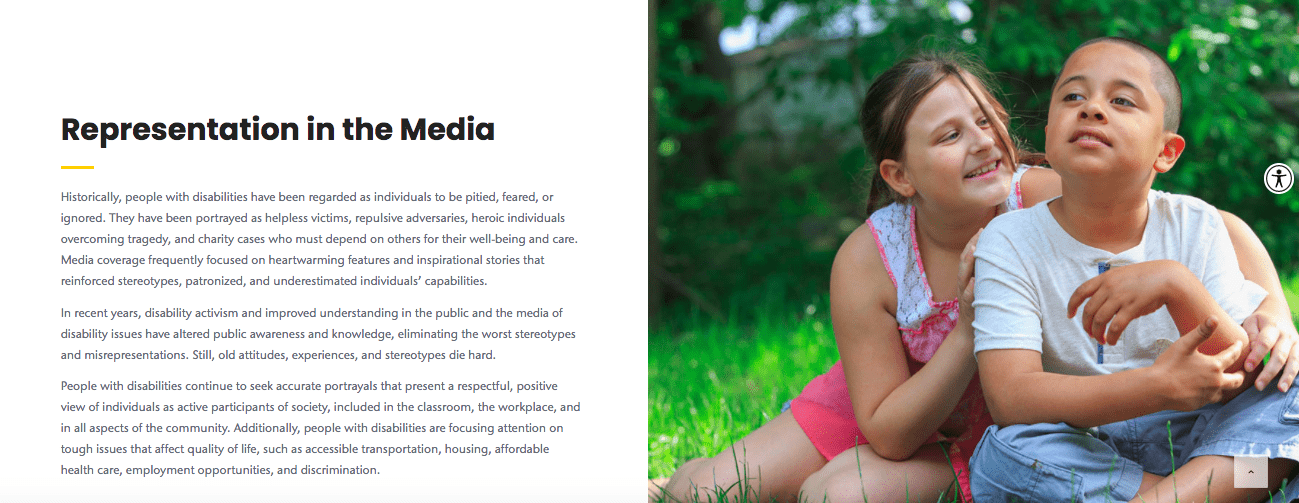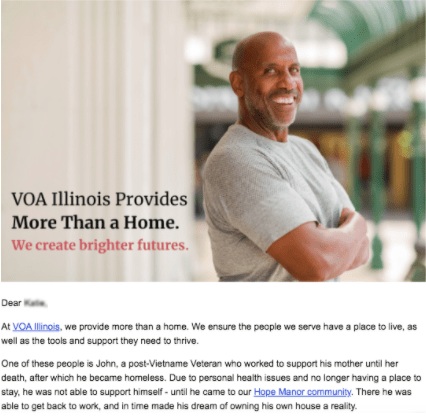At Prosper, we know that marketing is a powerful tool for mission advancement. We also know that the language we use can play an important role in conversations about diversity as well as in supporting the advancement of equity and inclusion within our communities. How? By using language that reflects the potential and the promise of a brighter future that is possible with the proper resources and support, or strength-based communication. This approach:
- Leverages person-first language that focuses on the individual, not their circumstances
- Focuses on a person’s contributions and aspirations as opposed to the challenges they face
- Recognizes we all face obstacles and require support
- Emphasizes the collective benefit of addressing the root causes of inequity
- Considers lived experience and amplifies community voice
This post highlights three organizations that are communicating in a strength-based way and doing it well.
The Arc – People First Communication
The Arc’s communications focus on putting the person, not their disability, at the center. In fact, the organization has a section on their website about using language to drive social change. They write:
“Words are powerful. The language a society uses to refer to persons with disabilities shapes its beliefs and ideas about them. Old, inaccurate, and inappropriate descriptors perpetuate negative stereotypes and attitudinal barriers. In contrast, using thoughtful terminology can foster positive attitudes about persons with disabilities.”
The Arc eliminates the word disability as an adjective to create people first communication, sharing:
“By placing the person first, the disability is no longer the primary, defining characteristic of an individual, but one of several aspects of the whole person. It eliminates generalizations and stereotypes, by focusing on the person rather than the disability.”
The Arc also acknowledges the important role the people they exist to serve play in advancing their mission by talking about their work not just for people with disabilities, but also with them.
On their press page, The Arc addresses the representation of people with disabilities in the media.

Step Up – Empowering Potential
In our recent blog post, How to Create a Guide to Strength-Based Communication For Your Nonprofit, we highlighted the resource Step Up put together for their organization.

- They’ve moved away from unintentional marginalization that comes from defining people by their neighborhood, family or income situations by using person-first language, like The Arc. This is seen commonly when organizations write things like, “We serve at-risk youth.” Instead, Step Up talks about girls in under-resourced communities. It’s where they live that’s under-resourced, not the girls.
- They use language like propel, recognizing that each girl they work with already has abilities, they are simply lifting up what’s already innate to them.
- The Frameworks Institute recommends leading with the human potential to help people recognize that everyone needs support and that the work of organizations, like Step Up, benefit us all.
VOA Illinois – Using Impact Stories
The Illinois chapter of Volunteers of America has made huge strides in transitioning from need-based to strength-based communication, updating their mission and messaging, while bringing everything to life through their recent campaign, More Than a Home. VOA Illinois’s campaign goal was twofold: to demonstrate that their services are about more than just providing shelter and to educate people about the challenges no one should have to face alone using real impact stories.
In this email, they emphasize the story not of VOA, but of the work John did to achieve his goals of owning a home. Remember, when taking this approach, be sure the person whose story you are highlighting participates in the process and reviews materials before they are shared publicly.
If your organization is ready to take the strength-based approach, read our post on how to create a guide to strength-based communication at your nonprofit.

